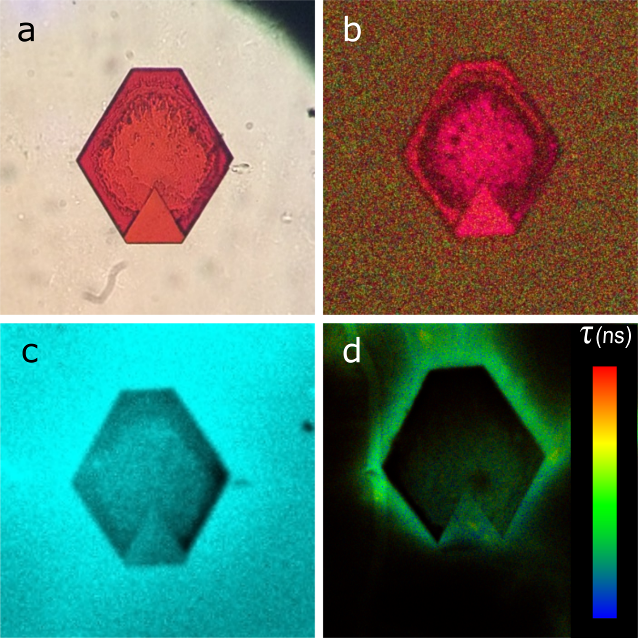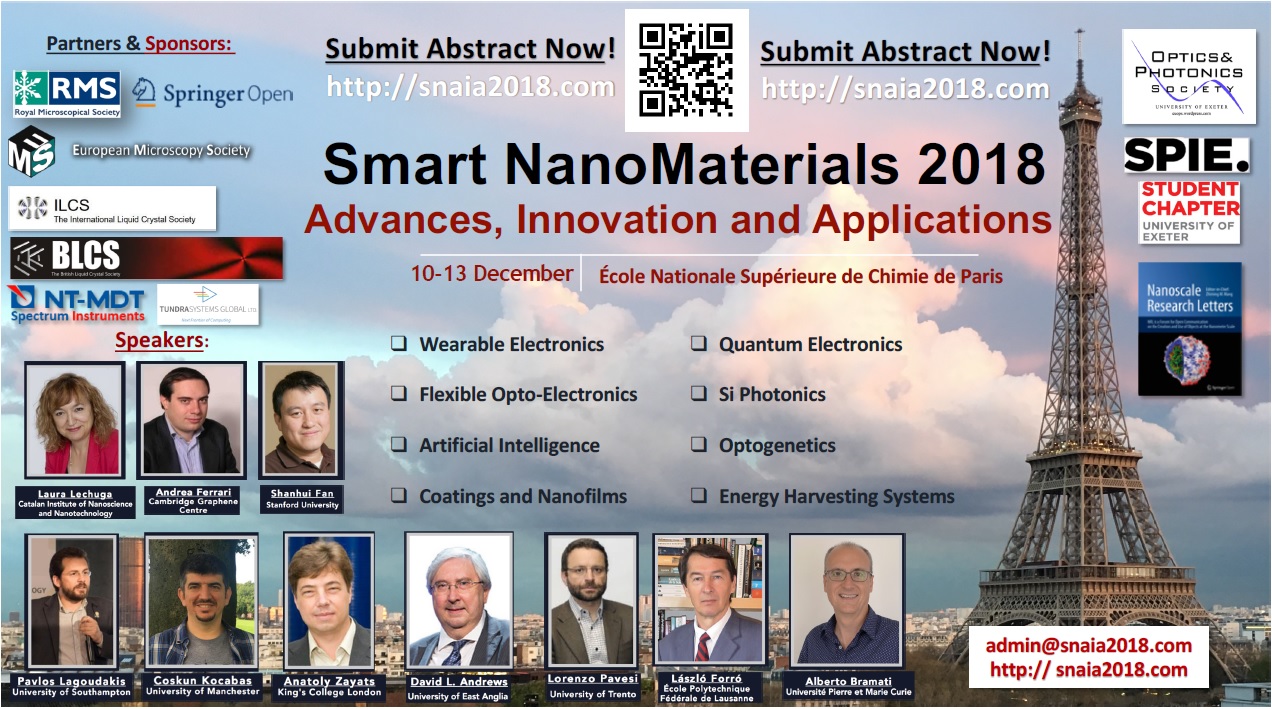We are currently organising a conference – Smart Nanomaterials: Advances, Innovation and Applications (SNAIA) 2018 Conference .
The programme committee are now accepting abstracts for both oral and poster presentations. The abstract submission deadline is 15 September 2018.
The conference’s focus is to discuss the most critical technological advances, innovations and new practical applications in Smart Technologies. The conference will take place in the École Nationale Supérieure de Chimie de Paris, Paris Tech from 10th to 13th of December 2018. More information on SNAIA 2018 can be found at www.snaia2018.com
More than 200 attendees will meet at this Conference and exhibition. The SNAIA 2018 will provide a unique platform to meet, share knowledge and establish links between experts from academia and industry in the emerging fields of Wearable and Printed (Opto)Electronics, CMOS Photonics, Quantum Computing, Artificial Intelligence, OptoGenetics, Smart Coatings and Thin Films.
The conference programme will include:
- 2D Material Symposium (in partnership with Exeter’s Centre for Graphene Science)
Chair: Prof Monica Craciun (University of Exeter)
- Liquid Crystal Symposium (in partnership with the British Liquid Crystal and International Liquid Crystal Societies)
Chair: Prof Ingo Dierking (University of Manchester)
- Optoelectronics and Photonics Symposium (organised by the Univ. of Exeter SPIE Student Chapter)
Chair: Joaquín Faneca Ruedas (President of Univ. of Exeter SPIE Student Chapter)
- Si Photonics Symposium
Chair: Prof Frederic Gardes (University of Southampton)
- Microscopy and Microspectroscopy of Nanomaterials Symposium (in partnership with the Royal Microscopical Society (RMS) and the European Microscopy Society (EMS))
Chair: Dr Anna Baldycheva (University of Exeter)
- Smart Biosensors and Bioanalytical Systems Symposium
Chair: Prof Andrey Somov (Skoltech University)
We have an exciting list of Keynote and Invited Speakers lined up for this event:
Prof. Andrea C. Ferrari – Cambridge Graphene Centre
Prof. Shanhui Fan – Stanford University
Prof. Pavlos Lagoudakis – University of Southampton & Skoltech University
Prof. David Andrews – University of East Anglia
Prof. Laura Lechuga – Catalan Institute of Nanoscience and Nanotechnology
Prof. Rudolf Bratschitsch – University of Münster
Prof. Anatoly Zayats – Kings College London
Prof. Lorenzo Pavesi – University of Trento
Prof. Aldo Di Carlo – University of Rome
Prof. Frank A. Nüesch – École Polytechnique Fédérale de Lausanne
Prof. Frederic Gardes – University of Southampton
Prof. László Forró – École Polytechnique Fédérale de Lausanne
Prof. Jérôme Tignon – École Normale Supérieure & UPMC
Prof. Igor Bondarev – North Carolina Central University
Prof. Ingo Dierking – University of Manchester
Prof. Alberto G. Curto – Eindhoven University of Technology
Prof. Alberto Bramati – Université Pierre et Marie Curie
Prof. Ventsislav Valev – University of Bath
Prof. Mikhail Portnoi – University of Exeter
Prof. Coskun Kocabas – University of Manchester
Prof. Monica Craciun – University of Exeter
Prof. Igor Lukyanchuk – University of Amiens
Prof. Oleg Yazev – École Polytechnique Fédérale de Lausanne
Prof. Alberto G. Curto – Eindhoven University of Technology
Prof. Zhe Li – Cardiff University
Prof. Pavlos Savvidis – University of Heraklion
Prof. Cinzia Casiraghi – University of Manchester
Prof. Andrey Somov – Skoltech University
Prof. Daniel Wolverson – University of Bath
Prof. Sergey Tarasenko – Ioffe Institute St. Petersburg
Prof. Vladimir Antonov – Royal Holloway University
Dr. Stanislav Leesment – NT-MDT
Prof. Shun-Jen Cheng – National Physical Laboratory
Prof. Slaven Garaj – National University of Trento
Dr. Cesar Moreno – Catalan Institute of Nanoscience and Nanotechnology
Dr. Giacomo Scalari – ETH Zürich
Prof. Jochen Feldmann – Ludwig Maximilian University of München
Prof. Brian Gerardot – Heriot-Watt University
Prof. Jake Fontana – U.S. Naval Research Laboratory
Dr. Dave Carbery – University of Bath
Prof. Nicolae Panoiu – University College London
Prof. Concita Sibilia – La Sapienza University of Rome
Dr. Pavel Ginzburg – Tel Aviv University
Prof. Hiromi Okamoto – Institute for Molecular Science
Prof. Liwu Zhang – Fudan University
Prof. Louise Bradley – Trinity College Dublin
The conference will also produce two publications:
- A Book of Abstracts (printed version available on the first day of the SNAIA2018).
- A special thematic volume on Smart Nanomaterials of the peer-reviewed open-access journal Nanoscale Research Letters. Articles will be added as soon as they are peer-reviewed after the conference.



